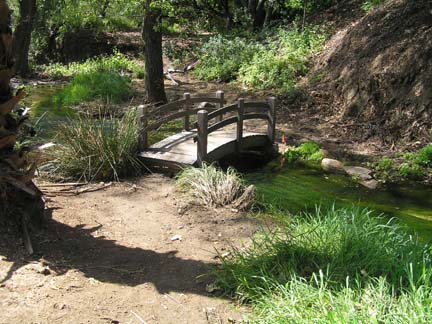Ecologically Speaking with Greg Rubin
Reluctantly I went to the Garden Club meeting since I’d heard the speaker before. Was I in for a pleasant surprise! I learned more in that meeting than I can possibly relay. However, I will point out the highlights. Greg Rubin, a former aerospace engineer, is an award-winning landscape contractor. In the past 23 years he has designed and installed over 750 native landscapes in Southern California.
As of the date of his talk, March 28, not one of the homes he landscaped had been burned despite all the fires we’ve had. I have seen photos of his landscapes sitting pristinely beside burned out homes on all sides. Rubin’s projects include the infield of the Del Mar Racetrack, Lux Art Institute, and Sanderling at Aviara. He has written “The California Native Landscape” with Lucy Warren. By the time Rubin’s talk was over, I wanted to run home, rip out my yard and start over with only native plants. (I didn’t; I don’t have the energy or the time.)
Rubin believes in using native plants. They give one a “sense of place” as well as they preserve habitat. When properly designed, maintenance is much less time-consuming. Natives use between sixty to ninety per cent less water than most non-natives found in climates damper than ours.
Natives do not attract fires. Rubin says, “It appears that natives, when lightly hydrated two to three times per month and planted in a way that encourages groundcovers and well-spaced “islands” of shrubs, can actually help trap embers, allowing them to burn out, whereas clearing to bare ground may allow embers to directly contact and possibly ignite your house.” Rubin likens the flight of an ember in a fire to a wind tunnel effect.
On the other hand, Rubin says succulents and cacti store water; in a raging fire, that moisture boils leaving a dry plant to burn merrily. Ice plants, native to Africa’s coasts, are particularly susceptible to burning in a wild fire.
Many people feel natives are difficult to grow and maintain. Rubin explained that this is a total misconception. Native gardens do not need to appear dead or dormant six months of the year. By focusing on evergreens, you can have bursts of color or new growth as accents as each variety comes into season.
Note: The fire department does not agree, so please check with your building department AND the fire department before you plant within the 100-foot “safety” zone. You don’t want to be fined and forced to remove your new landscape.
He pointed out, “There are plenty of natives well-scaled for smaller yards.”
He added, the worst thing you can do to the natives is to rototill the soil and then fertilize with manure. The fungi and crusts that natives depend on to thrive will die. The manure will encourage bacterial growth, which can leads to disease and potentially plants. Truffles and some edible mushrooms are examples of “ectomycorrhizal fruiting bodies; oaks and avocados are examples of ectomycorrhizal trees – this form of fungus inhabits dense woodlands with organic mulches.”
Rubin continued, “Endomycorrhizae inhabit the roots of many species that prefer inorganic mulches, like desert species, coastal sage scrub, and grassland. Unlike ectomycorrhizae, endomycorrhizae are completely microscopic and cannot be seen without a scanning electron microscope.”
Rubin pointed out that bulldozers and drip systems “can destroy this delicate soil ecology. For example, we have known that trampling underneath the drip line of avocados can seriously affect their health. Overhead watering systems such as low volume sprinklers, micro-sprays or spinners are best for emulating natural rainfall, which in turn promotes the development of this intricate and delicate soil ecology.”
If you are interested in a garden of native plants, it must be designed so it “emulates California’s native ecology as closely as we can,” Rubin says. He continues, “75 percent of the planting should be evergreen.”
This gives “year-round foliar color and texture and creates a strong backbone that avoids a dead or dormant look, and it is one of THE most important principles.” He went on to explain that you can have any landscape style with all natives but you need to know what plants there are and how to arrange them for their health and for the look you seek. He showed us formal gardens, Japanese gardens, Mediterranean gardens, even a Versailles-type garden. All were planted with native plants.
Next month I will continue with Rubin’s information: How to organize the actual creation of your garden and how to maintain it. The maintenance includes ant control.
The June 20 Garden Club meeting will be about orchids and be held at the Mission Hills Church of Christ, located at 4070 Jackdaw Street, from 6 until 8 p.m.

Category: Local News







